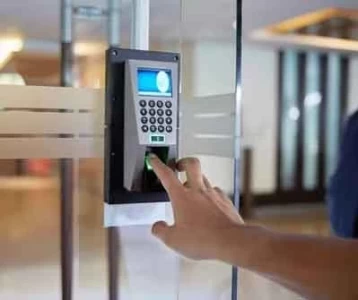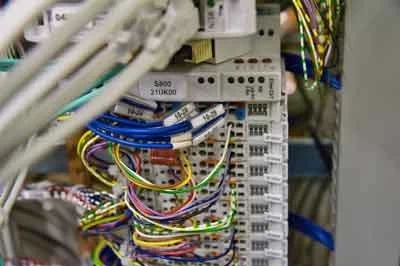The Language of Buildings: Exploring Smart BAS Standards and Protocols

Building Automation Systems (BAS) have transformed the way we manage buildings. These systems control and optimize various aspects like HVAC, lighting, security, and access control. However, for these disparate components to communicate and function cohesively, a common language is essential. This role is filled by communication protocols – standardized sets of rules that govern how devices within a BAS exchange information.
This article explores the world of smart building standards and protocols, examining their benefits, types of commonly used protocols, performance considerations, and the importance of standardization in building automation.
Benefits of Standardized Communication Protocols in BAS
Standardized communication protocols offer several advantages in building automation:
Interoperability: Protocols enable devices from different manufacturers to communicate seamlessly within a single BAS. This allows building managers to select the best equipment for each function, regardless of brand, fostering greater flexibility and vendor independence.
Reduced Integration Costs: Standardized protocols simplify system integration and reduce development costs associated with proprietary communication methods. This makes BAS implementation more cost-effective and eliminates the need for custom interfaces when integrating new devices.
Simplified Maintenance: Standardized protocols facilitate troubleshooting and maintenance of BAS. Technicians familiar with a specific protocol can quickly identify and address issues in devices from various manufacturers, streamlining maintenance processes.
Scalability and Future-proofing: Standardized protocols allow for easier system expansion and integration of new devices in the future. Building managers can readily add new functionalities without worrying about compatibility issues, ensuring BAS adaptability to future needs.
Common Building Automation Communication Protocols
Several communication protocols play a vital role in building automation:
BACnet (Building Automation and Control Networks): One of the most widely adopted open-standard protocols, BACnet offers a comprehensive suite of features for device communication, data exchange, and remote management. It supports various network topologies and is well-suited for complex BAS deployments.
Modbus: A simple and widely used protocol, Modbus is particularly popular for communicating with sensors and actuators. It offers basic functionalities for data exchange over serial or Ethernet connections and is a cost-effective option for smaller BAS applications.
DALI (Digital Addressable Lighting Interface): This protocol specifically addresses digital lighting control. DALI allows for granular control of individual light fixtures within a building, enabling features like dimming and scene configuration.
KNX (Konnex): A European standard gaining global recognition, KNX focuses on ease of use and interoperability between devices from various manufacturers. It utilizes a bus topology and offers functionalities for lighting, HVAC, and security control within a BAS.
OPC UA (Open Platform Communications Unified Architecture): An emerging standard, OPC UA provides a service-oriented architecture for machine-to-machine communication. It offers high flexibility and scalability, making it a promising option for complex BAS applications that require integration with other IT systems.
Performance Considerations and Choosing the Right Protocol
The choice of communication protocol in a BAS depends on several factors:
System Complexity: For complex BAS deployments with a multitude of devices and functionalities, a robust protocol like BACnet might be ideal. For smaller systems with fewer devices, simpler protocols like Modbus can suffice.
Cost Considerations: While standardized protocols generally offer cost savings in the long run due to simplified integration and maintenance, some protocols have higher initial licensing fees compared to others. Building managers need to find a balance between cost and functionality when choosing a protocol.
Security Requirements: Security features vary across protocols. For BAS applications handling sensitive data, protocols with robust security mechanisms like encryption are crucial.
Vendor Support: The widespread adoption of a protocol is a significant factor. Protocols with wider vendor support offer greater flexibility in device selection and ensure long-term compatibility with future technologies.
The Importance of Standardization: Building a Unified Future
Standardized communication protocols are the cornerstone of a well-functioning BAS. They enable seamless communication between devices, enhance system interoperability, and simplify maintenance. As the building automation industry continues to evolve, the development of robust and secure protocols will play a crucial role in creating intelligent buildings that are not only efficient but also adaptable and responsive to occupant needs. While several protocols currently exist, the need for even more standardized and future-proof solutions remains. Industry collaboration and the development of open-source protocols will pave the way for a more unified BAS landscape, allowing building managers to leverage the full potential of smart building technologies.
Beyond Standards: Emerging Trends and Future Directions
While standardized protocols offer a solid foundation for BAS communication, several emerging trends are shaping the future of smart building communication:
Wireless Communication Protocols: Protocols like Zigbee and Bluetooth Low Energy (BLE) are gaining traction due to their low power consumption and suitability for battery-operated devices within a BAS. These protocols enable wider sensor deployment and facilitate data collection from previously inaccessible areas within a building.
Internet Protocol (IP) Convergence: The convergence of BAS protocols with IP-based technologies is simplifying network management and integration with IT infrastructure. This allows for easier integration of BAS data with other building management systems and facilitates centralized monitoring and analysis.
Cybersecurity Considerations: As building automation becomes more interconnected, cybersecurity concerns are paramount. Future protocols need to prioritize strong security measures like encryption and authentication to safeguard sensitive data and prevent unauthorized access to BAS systems.
Open-Source Protocols: Open-source protocols like BACnet/IP and Modbus TCP/IP are gaining popularity due to their transparency and lower licensing costs. This collaborative approach encourages innovation and fosters wider adoption of standardized communication within BAS deployments.
A Connected Future for Buildings
Standardized communication protocols are essential for building a robust and interoperable BAS ecosystem. By facilitating seamless communication between devices and simplifying system integration, protocols pave the way for the development of intelligent buildings that are efficient, adaptable, and occupant-centric. As technology continues to evolve, the focus will shift towards wireless communication, IP convergence, enhanced security measures, and open-source collaboration. By embracing these advancements, the building automation industry can create a truly connected future, where buildings function as cohesive systems, optimized for energy efficiency, occupant comfort, and long-term sustainability.








